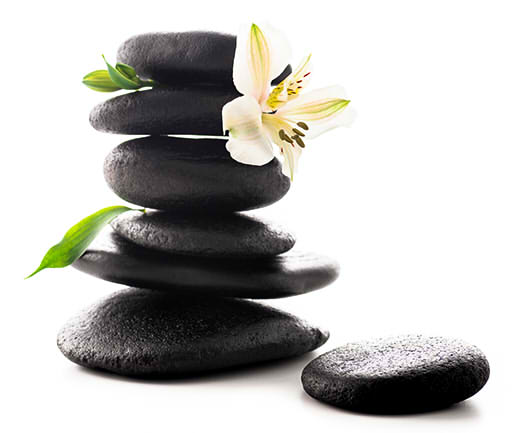Children should have access to resources and information that help them remain active for healthy development. Further, remaining active prevents them from developing medical complications that may later warrant medical interventions. As a caregiver, you want to research innovative and healthy exercises for your kids. Among the most effective fitness practices to introduce to your child is pilates. The exercise presents numerous benefits for them and promotes consistent fitness as they grow.
When researching where to access Pilate services, consider working with professionals who understand the importance of curating the experience to meet your child’s needs. They should also understand the importance of introducing Pilates excitingly to encourage the child’s consistency.
The Nature of Pilate Exercises
Pilates is essential for body posture correction, which many kids and adults suffer from. Body posture problems may arise if the child spends long hours bent over while using their phones or seated haphazardly when watching television or playing video games.
Additionally, the body posture problem may develop based on how long your kid sits in school. By engaging your child in pilates classes, you combat the problems of sedentary lifestyles.
A wellness professional can help you curate Pilates exercises for your kids to help them attain their ideal fitness goals based on age and body type. Therefore, you can schedule an appointment to express your goals for helping your child achieve healthy fitness goals.
The nature of Pilates exercises makes them variable, allowing children to benefit significantly from the low-impact activities. The exercises include planks, leg lifts, side kicks, and spine twists. Including these workouts in different variations can promote better posture adjustment, promoting growth for your kids.
The Benefits of Pilates for Kids
Exercise is highly advisable for all ages, as you can move your muscle groups. In return, you have better body mobility and fewer chances of suffering from body posture problems in the future.
When introducing Pilates to your kids, you should consider the main benefits they stand to gain, depending on the expected outcome. This way, you can track improvements and raise concerns if your child still experiences posture problems. The benefits of Pilates for kids include:
Improved Body Flexibility
Body flexibility involves moving and holding your body in a position different from the usual sitting or standing. Developing good body flexibility is essential because it allows you to stretch and align your spine when needed. As a result, you retain a healthy posture and overall better well-being.
Over time, your flexibility may significantly reduce, especially if you remain stationary for longer. Reduced flexibility may hinder proper body growth in children, resulting in mobility challenges later. You can prevent complications by introducing light Pilates to your child’s routine and ensuring they follow through with it for a few weeks.
Once their flexibility develops, you can consult an expert to determine whether to modify the exercises to accommodate a more challenging routine for the child. While changing the workouts to meet the child’s expectations is advisable, you should also consider their abilities and at what stage of development they are. Older kids may take on the modified Pilates easier than the younger ones, so consider their age needs as well.
Promote Endurance
Endurance builds with continuous exposure to exercise, improving the body’s ability to overcome pressure or tension when exercising. Although children are still developing, they can benefit significantly from building endurance early. For example, they will be less likely to suffer from muscle pulls when participating in high-impact sports. This advantage can promote your child’s well-being as they pursue their dreams.
Pilates builds endurance by having the child remain in a slightly challenging position for a specific time. For example, holding a plank position for fifteen to twenty seconds strengthens their core. As a result, they grow stronger, making them more robust than other children in the average age group.
Introducing light Pilates exercises early in the child’s life makes them more likely to continue with them even when they grow up. You can, therefore, worry less about the risk of injury and a subsequent need for medical attention.
Promote Posture Correction
Good body posture is critical to your child’s well-being and may affect their growth. Good posture encompasses having your spine and neck straight as you sit or stand. Failure to observe good sitting posture harms your well-being, as you may experience recurrent back and neck pain.
Improper posture also interferes with your outward appearance, leaving you looking hunched and shorter than you are. You should, therefore, encourage your child to remain upright when sitting or resting on a chair, as poor posture can trigger spine and neck injuries over time. Pilates is helpful in posture correction, provided you find effective exercises to improve your child’s posture.
Examples of Pilates exercises to try include back extension, where one lies on an exercise ball and stretches backward, making sure to extend the back. You can request an experienced instructor to demonstrate the exercises to your child to ensure they receive proper guidance. Additionally, the instructor can modify the exercises depending on your child’s needs, especially if the child has reported pain symptoms.
Pilates Target Specific Muscle Groups
Different muscle groups require varying exercises to keep them healthy, so you should consider introducing Pilates curated for optimum muscle development. While your child does not necessarily need to increase their muscle size, keeping them toned is beneficial to promote overall body health.
Pilates provides an excellent opportunity for your child to work out different muscle groups, allowing them to remain in shape. Further, since Pilates is versatile, you can vary the exercises to promote a balanced routine for the child, keeping their body size and age in mind.
Targeted exercises are also excellent for rehabilitation, especially if your child has previously sustained serious injuries. For example, if they participated in high-impact sports that resulted in persistent back pain, they could benefit from Pilates to help them recover and improve their overall well-being.
Improved Body Balance
Your body balance allows you to stand and move with ease and without worrying about falling over. It also ties in with your endurance, especially when carrying a load on your back or in your hands. A well-balanced person can remain upright despite the additional weight from the loads, indicating that they have a good spine and neck.
Introducing pilates to your child’s daily routine can help improve their body balance and, thus, their overall well-being. Examples of pilates exercises to introduce include the downward dog, where the child supports themselves with their arms while pushing down one leg at a time. Additionally, you can incorporate side stretches to balance each side of your body.
After some time, consider varying the exercises again and introducing others to help your child adapt to different workout intensities. For older children, you can also introduce reps to help them build endurance and develop their approach to the optimal exercises.
Pilates Help Fill Up Your Child’s Free Time
With the growing rate of sedentary lifestyles, you need to find creative ways of keeping your child active. Among them is introducing Pilates exercises, which fill up your child’s free time well. In the beginning, you can incorporate Pilates for up to ten minutes per day. The short time spans will help you monitor how your child reacts to the new activity, and whether you can continue with it.
If your child expresses interest with coninuting Pilates, you can then discuss how to introduce a schedule to help fill up their free time. Making gradual progress is essential, as it gives your child time to adapt into the new routine without stressing them.
Pointers on How to Teach Pilates to Children
Teaching your child different Pilates exercises forma part of the introduction process, and it plays a significant role in determining whether they accept it. Due to this, you want to consider the most fun and creative ways to introduce PIlates, making sure to incorporate your child’s inputs and concerns throughout the process.
If you are working with a skilled professional, you can tell them more about your child’s personality, their temperaments and their workout experience. By providing the details, you enable the professional to craft a workable routine that pushes your child.
The following are pointers you can use when teaching your child Pilates:
Ensure Your Child Understands the Health Benefits of Pilate Exercises
If you are looking for more ways to keep your child motivated and continue with Pilates, try informing them of the multiplebenefits. Giving them details about what they can expect to gain from the experience plays a significant role in how receptive they are. Ultimately, they are also more likely to remain motivated when they learn about the advantages of Pilates.
Further, informing your child about the benefits of Pilates helps them set personal goals with the exercises. Doing so can help them build their consistency and motivation as well, helping them to incorporate pilates into their life permanently.
Be Patient if Your Child is Uncomfortable
Although your child may be excited to learn pilates, they may be tired and uncomfortable during soem sessions. These are normal emotions, and you need to remain patient with them to encourage their participation. Among the approaches to try is to listen to their complaints and determine whether to modify the exercises.
You should also avoid yelling and forcing them to perform a specific exercise pose, mainly because they may be experiencing genuine pain or discomfort. Maintaining an open communication channel will be beneficial, as the child can elaborate on what they would like to change and what is working. In return, you can adjust the workout routines to meet the child’s needs.
Make Informed Observations on the Child’s Progress
Your child’s progress after starting pilates classes becomes apparent after some time, and you should aim to observe their progressive improvements. For example, if you notice that your child’s endurance when holding a plank is higher after a few weeks, point this out to them for encouragement. You can also request that they consider modifying the workout to increase the challenge, but only if they are open to it.
If your child is less verbal with their issues, you may need to sit through an entire session with them. During this period, you can observe whether they express discomfort during a specific activity and raise the concern with them later.
Learn When to Stop the Activity
Although you may want the best for your child, you need to learn when to stop pushing them based on their reactions to Pilates. You can pick up on significant indicators of whether the child is still motivated or whether you might need to find alternative exercises for them. For example, if they are grumpy and verbalize their disinterest in continuing with Pilates, do not ignore them but instead engage the child in finding suitable alternative exercises.
Contact an Acupuncture and Wellness Professional Near Me
Pilates is an excellent, low-impact exercise to incorporate into your child’s life to protect them from health complications as they grow. Your kids can benefit significantly thanks to the versatility and applicability of varying Pilates exercises. If your child is experiencing recurrent body pain from a sedentary lifestyle, an experienced acupuncturist may recommend Pilates to activate different muscle groups and promote development. Their guidance on the child’s case should also enlighten you on the ideal Pilates exercises to focus on. This way, your child’s condition can improve.
At Trinity Acupuncture, we aim to provide reliable and quality services to help alleviate pain. You can count on us to recommend helpful Pilates programs for your child, especially if you intend to help them improve their wellness. Our team has conducted thorough research to develop practical solutions for posture correction, among other conditions. We understand the importance of giving your child proper developmental support, including introducing them to Pilates. For more information on the benefits of Pilates for kids, contact us today at 310-371-1777.




